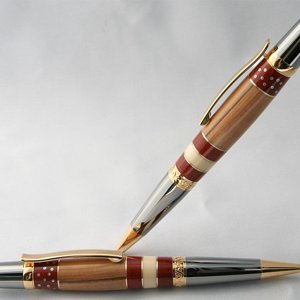qquake
Member
This is a PSI Icon pen, in chrome. The blank is a Color Grain called Festival, also from PSI. The finish is Pens Plus. I'm not totally happy with the finish, but it's not too bad, I suppose.
Attachments
-
 066.jpg244.1 KB · Views: 153
066.jpg244.1 KB · Views: 153 -
 067.jpg250.3 KB · Views: 147
067.jpg250.3 KB · Views: 147 -
 068.jpg245.3 KB · Views: 147
068.jpg245.3 KB · Views: 147 -
 069.jpg213.6 KB · Views: 146
069.jpg213.6 KB · Views: 146 -
 070.jpg143.4 KB · Views: 157
070.jpg143.4 KB · Views: 157 -
 071.jpg169.6 KB · Views: 161
071.jpg169.6 KB · Views: 161 -
 072.jpg213.5 KB · Views: 154
072.jpg213.5 KB · Views: 154 -
 073.jpg216.1 KB · Views: 140
073.jpg216.1 KB · Views: 140 -
 075.jpg135.4 KB · Views: 140
075.jpg135.4 KB · Views: 140 -
 074.jpg208.7 KB · Views: 140
074.jpg208.7 KB · Views: 140 -
 076.jpg224.8 KB · Views: 138
076.jpg224.8 KB · Views: 138 -
 077.jpg262.2 KB · Views: 133
077.jpg262.2 KB · Views: 133 -
 078.jpg155.7 KB · Views: 138
078.jpg155.7 KB · Views: 138 -
 079.jpg160.7 KB · Views: 130
079.jpg160.7 KB · Views: 130 -
 080.jpg187.4 KB · Views: 131
080.jpg187.4 KB · Views: 131 -
 081.jpg159 KB · Views: 155
081.jpg159 KB · Views: 155



